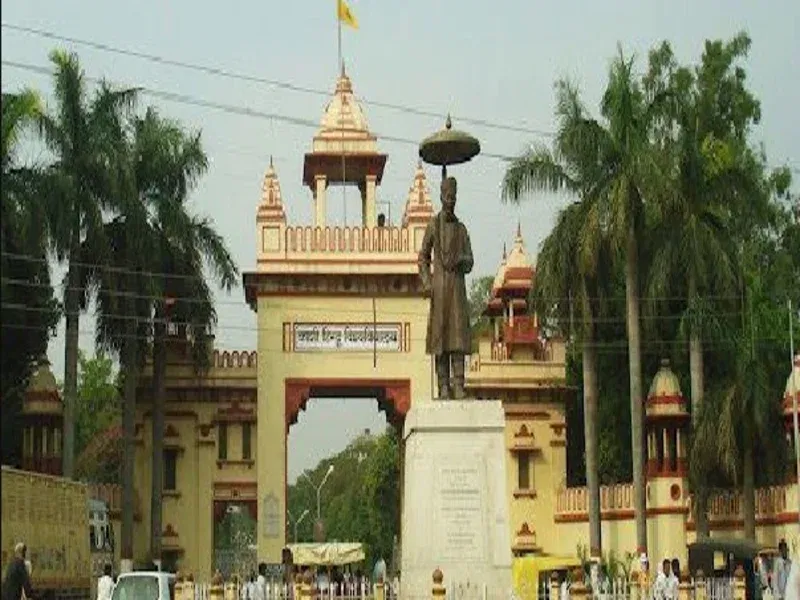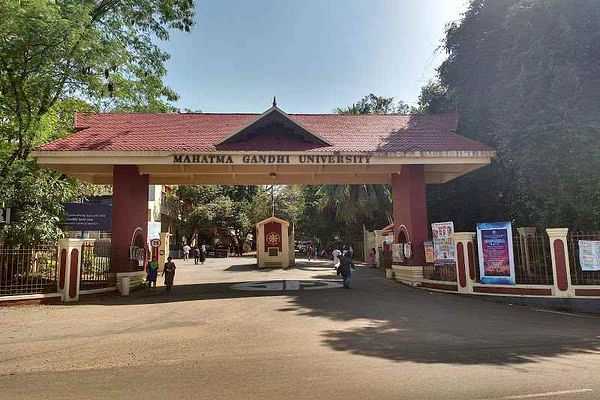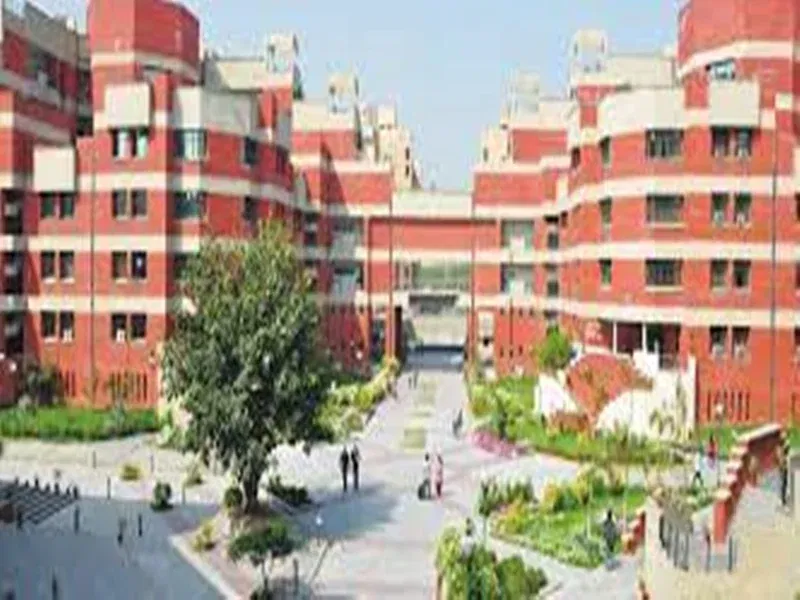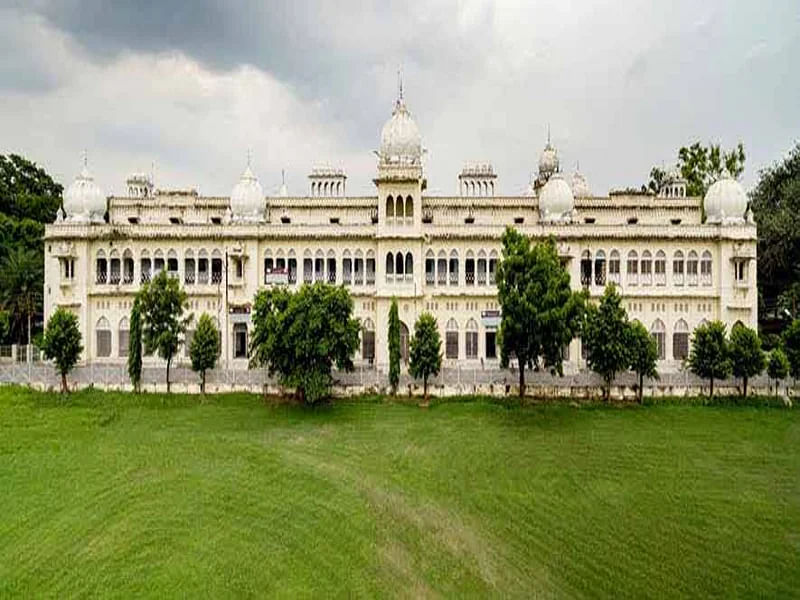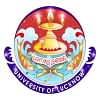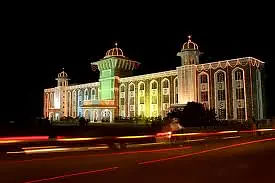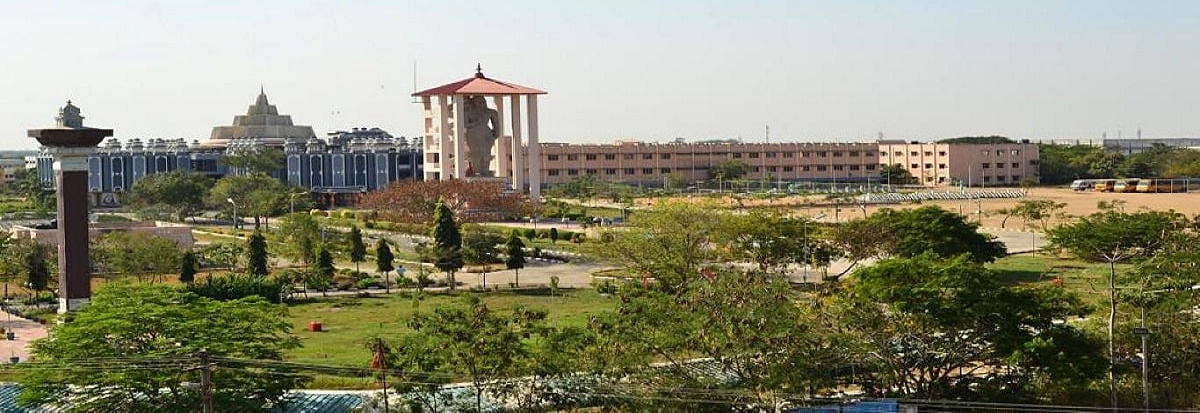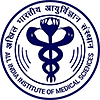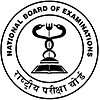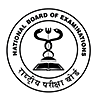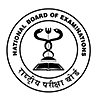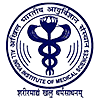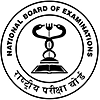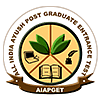BAMS Syllabus and Subjects 2025
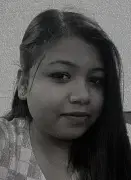
The subjects of BAMS focus on topics such as modern anatomy, pathology, physiology, principles of medicine, and pharmacology. BAMS first-year subjects mainly include the foundational areas of Ayurvedic science associated with medicine and surgery. A similar pattern is followed in the following years.
The BAMS syllabus imparts practical, and theoretical knowledge in the field of Ayurvedic science and contemporary medical & surgery practices. The BAMS syllabus is spread across 5.5 years. The last year or year-and-a-half will require students to do an internship.
The BAMS course helps students practice ancient Ayurvedic medications and practices independently or at a healthcare center and acquire opportunities in healthcare services, research, and medicine.
Table of Contents
- Important Facts for BAMS Syllabus
- BAMS Syllabus Year Wise
- BAMS Subjects Lists
- List of Core Subjects in BAMS Syllabus
- BAMS College Practical Subjects
- BAMS Top Colleges List
- BAMS Reference Books List
- BAMS Course Projects
- BAMS Teaching Methodology and Techniques
- BAMS Course Structure
Important Facts for BAMS Syllabus
Bachelor of Ayurvedic Medicine And Surgery is the study of Ayurveda, Medicine, And Surgery. Here are some essential facts to know before one should pursue BAMS:
- The BAMS syllabus spans 5.5 years with mandatory internship in the final year of the course.
- The BAMS syllabus is uniform across all universities as all colleges follow the syllabus prescribed by the CCIM.
- The syllabus integrates modern medical science with traditional Ayurvedic knowledge.
- Research methodology is an integral part of the curriculum to encourage evidence-based practice.
- The course emphasizes respecting patient autonomy, confidentiality, and dignity training students in professional ethics.
- The syllabus includes an extensive study of Ayurvedic pharmacology.
BAMS Syllabus Year Wise
BAMS syllabus provides the foundational knowledge of Ayurveda and is divided into four parts which include Sanskrit, Padartha Vigyan, Ayurveda Itihas, and Ayurvedic Nirupama. The BAMS subjects year-wise are given below:
BAMS 1st Year Syllabus
The BAMS 1st year syllabus includes the study of Ayurvedic Nirupama, Pariksha, etc. The table below contains the
| BAMS 1st Year Subjects | Part A | Part B |
| Sanskrit | Vyakaranam, Translation | Vaidya Sadvrittam |
| Padartha Vigyan And Ayurved Itihasa | Ayurveda Nirupana, Ayurveda Darshana Nirupana | Gunavigyaniyam, Karma Vigyaniyam, |
| Kriya Shareera | Dosha, Prakriti, Modern Physiology, Vitamins & Minerals | Dhatu, Rasa Dhatu, Rakta Dhatu, Mamsa Dhatu |
| Rachana Shareera | Paribhasha Shaarira, Garbha Shaarira, Pramana Shaarira | Anatomical Terminologies, Embryology |
| Maulik Siddhanta Evum Astanga Hridya | Ashtanga Hridaya Sutrasthana Adhyaya, | Ashtanga Hridaya Sutrasthana Adhyaya |
BAMS 1st Year Practical Subjects
Students are introduced to several practical subjects under the BAMS course syllabus. Some of the practical topics under the BAMS Syllabus 1st year are given below:
- Ayurvedic practical
- Modern physiology practical
- Study of Bone
- study of Organs
- Shava Vichhedana
BAMS 2nd Year Syllabus
BAMS 2nd year syllabus includes the study of Dravay Vidhi Vigyan subjects. The table below contains the BAMS 2nd-year subjects along
| BAMS 2nd Year Subjects | Part A | Part B |
| Agadtantra | Visha and Agadatantra, Vishopakrama, Jangama Visha | Vyavahara Ayurveda, Vidhivaidyaka, Forensic Odontology |
| Charakasamhita -purvardha | Sutrasthana, Indriyasthana | Nidanasthana, Vimanasthana, Sharirasthana |
| Rasashastra Evam Bhaishajyakalpana | Dravya Varga, Application of Musha, Brief description of Yantras | Maharasa, Uparasa, Ratna, Sudha varga, Dhatu |
| Bhaishajyakalpana | Bhaishajya Kalpana, Bheshajprayogavidhi, Aushadhisiddha | Bahyopacharartha kalpana,Netraupacharartha kalpana |
| Dravyaguna Vijnan | Dravyaguna Shastra Paribhasa, Dravya, Guna | Dravya Shodhana, Apamishran, Nighantu Vigyan |
BAMS 2nd year Practical Subjects
Some of the practical topics under the 2nd year BAMS syllabus are given below:
- Study of the microscopic and macroscopic characters of Stem & Leaves
- Fundamental Principles of Laboratory Tests
- Hematology
BAMS 3rd Year Syllabus
The BAMS Syllabus 3rd year includes topics such as Swasthavritta, Charak Samhita, Rog-Nidan, and more. The table below contains the 3rd-year BAMS syllabus with important topics divided into Part A & Part B:
| BAMS 3rd-Year Subjects | Part A | Part B |
| Rog-Nidan | Dosha Dushyadi Vigyana, Vyadhi Vigyana, Basic Pathology, Rasavaha Srotas | Nidana Panchaka Vigyana, Pariksha Vigyana, Pranavahasrotas |
| Swasthavritta | Dinacharya, Rathricharya, Ritucharya, Sadvritta | Janapadodhwamsa, Vayu, Jala |
| Prasooti Tantra And Stri Roga | Stri Sharira Vigyana, Rajo Vigyana, Garbha Vignyana | Artava Vyapad, Yoni Vyapad, Vandhyatva, Stanaroga |
| Kaumarbhritya Parichaya | Vayobheda, Prana Pratyagamanam, Navajata Shishu Paricharya, | Sahajavyadhi, Prasavottara Vyadhi, Aupasargika Vyadhi |
| Charak Samhita | Uttarardha, Chikitsa | Kalpa, Siddhi Sthana |
BAMS 3rd year Practical Subjects
Some of the practical topics under the BAMS syllabus for third-year are given below:
- Post Mortem
- Clinical Posting
- Evidence in Court
- Demonstration of Dinacharya procedures
- Clinical training-obstetric skills
- Gynecological Skills
- Clinical exposure to care for Newborn
- Vaccination
- Blood Sampling
BAMS 4th Year Syllabus
As a part of the BAMS 4th-year syllabus, students must do research work in Ayurveda. The table below contains the subjects of the BAMS final year syllabus
| BAMS 4th Year Subjects | Part A | Part B |
| Kayachikitsa | Chikitsa sutra, Dvividhopakrama, Shadavidhopakrama | Etiopathogenesis, Nidana and Chiktsa, Vajikarana |
| Panchakarma | Sneha and Snehana, Bahyasnehana, Abhyanga | Raktamokshana, Basti Karma, Svedana |
| Shalya Tantra | Nirjantukarana, Sangyaharan, Trividha Karma | Shat Kriyakala, Vrana, Twak Vikara |
| Shalakya Tantra | Netra Samanya, Vishishta Chikitsa, Sandhigata Roga | Samanya Chikitsa, Shiro Roga, Karna Roga |
| Research Methodology And Medical Statistics | Anveshana, Gaveshana, Prayeshana, Anusandhan, and Shodha | Types of Research, Research Process, Research Tools |
Bachelor of Ayurvedic Medicine And Surgery 4th year Practical Subjects
Some of the practical topics under the BAMS final year syllabus are given below:
- Patient examination
- Observation of OPD patients
- IPD (Panchkarma) and Panchakarma Unit
- Identification and utility of surgical instruments
- Bedside Clinicals
- Identification and usage of different Surgical tools
- Para-surgical training procedure
- Sterilization
Top BAMS Colleges by City:
- BAMS Colleges in Pune
- BAMS Colleges in Nagpur
- BAMS Colleges in Bangalore
- BAMS Colleges in Delhi
- BAMS Colleges in Dehradun
- BAMS Colleges in Mumbai
- BAMS Colleges in Chennai
- BAMS Colleges in Jaipur
BAMS Subjects Lists
BAMS subjects are designed to enhance the knowledge and understanding of Ayurveda with the concepts of modern medicine. BAMS subjects 1st year usually include the core topics and the elective subjects are introduced in the remaining years. The core & elective subjects under the BAMS new syllabus are given in the sections below.
Core BAMS Subjects
The BAMS core subjects and the topics covered under them are listed in the table below.
| Subjects | Topics Covered |
| Sanskrit | Vyakaranam, Karma-Kartru, Translation, Vaidya Sadvrittam, Grantha-Adhyayan Krama Parichaya |
| Padartha Vigyan | Ayurveda Nirupana, Ayurveda Darshana Nirupana, Vigyan, Nirupana, Shastrartha Bodhaka |
| Ayurveda Itihas | Vyutpatti, Descent of Ayurveda, Shashvatvam and Anaditvam, Vrikshayurveda Vigyana |
| Ashtang Hridayam (Sutrasthan) | Ashtanga of Ayurveda, Agni, Prakriti, Koshta, Tridosha, Dhatu and Mala, Dosha, Viruddhahara, Traya Upastambha. |
| Rachana Sharir | Shariropkrama, Abhinivriti, Garbha, Asthi, Sandhi, Lasika, Peshi, Koshta, Granthi, Kala, Twak, Uttamangiya Tantrika Sansthan, Marma, Indriya |
| Kriya Sharir | Dosha, Prakriti, Modern Physiology, Sharir Poshana, Dhatu, Ojas, Upadhatu, Mala, Aharamala, Sweda, Dhatu Mala, Panchagyanendriya, Manas, Atma, Buddhi, Nidra |
| Charak Samhita (Purvadha) | Sutra Sthana, Nidana Sthana, Vimana Sthana, Sharir Sthana, Indriya Sthana |
| Swasthavritta | Vaiyuktika Swasthavrittam, Sarvajanika- Samajika Swasthavrittam, Yoga & Nisargopachara, Nisargopachara, Community Health Care |
| Dravyaguna Vigyan | Dravyaguna Shastra, Guna, Rasa, Karma, Audbhida Gana, Pharmacology |
| Rasa Shastra & Bhaishajya Kalpana | History of Rasa, Paribhasha Prakarana, Dravya Varga, Parada, Kramika Vikasa, Bhaishajya Kalpana, Aushada Matra, Sneha Kalpana, Pathya Kalpana |
| Roga Vigyam Evum Vikriti Vigyan | Dosha Dooshyadi Vigyanam, Vyadhi Vigyanam, Nidana Panchaka Vigyanam, Pariksha Vigyanam |
| Agada Tantra, Vyahar Ayurved Evum Vidhi Vaidyak | Visha, Chaturvimshatyupakrama, Acids and Alkalis, Forensic Medicine, Forensic Psychiatry, Medical Jurisprudence, |
| Charak Samhita (Uttarardha) | Chikitsa Sthana, Kalpa Sthana, Siddhi Sthana |
| Kayachikitsa | Kriya Kaala, Chikitsa Sutra, Dvividhopakrama, Chikitsa Sutra and Management of Jwara, Pranavaha Srotas, Mamsavaha Srotas and Medovaha Srotas |
| Shalakya | Shalakyatantra Nirukti, Parichayam, Ithihasam, Netra Samanya and Vishishta Chikitsa, Etilogy Pathology Classification of Diseases |
| Shalya | Yantra, Shastra, Anushastra, Nirjantukarana, Sangyaharana, Kshara Sutra, Pranasta Shalya, Rakta Mahatwa, Raktasrava, Shat Kriya Kaala, Vrana, Vikara |
| Prasuti Tantra Evum Stri Roga | Stri Sharir Vigyan, Rajo Vigyan, Garbha Vigyan, Prasava Vigyan, Atyayika Chikitsa in Prasuti, Stri Roga, Stanaroga, Shastra Karma |
| Kaumabhritya | Kaumarbhritya Parichaya Evum Balaka Paricharya, Samanya Chikitsa Siddhanta and Balaroga |
| Panchkarma | Snehana, Purvakarma, Swedana, Vamana, Virechana Karma, Basti, Nasya, Rakta Mokshana and Vyayamopachara |
BAMS Elective Subjects
Listed below are some of the elective subjects covered in the BAMS syllabus.
| Subjects | Topics Covered |
| Preventive Cardiology | Anatomy & Physiology of CVS, Etiopathogenesis of Cardiovascular Diseases, Diagnosis, Preventive Measure, Ayurvedic Principles |
| Medical Instrumentation | Physiological Transducers, Modern Imaging Systems, Therapeutic Equipment, Bioelectric Signals & Electrodes |
| Vrikshayuveda | Vriksha Ayurveda, Vriksha Shareer, Beeja Vichar, Bhoomi Nirupanam, Drum Raksha Vidhi, Jala Vivechan, Taru Chikitsa |
| Samkhya-Karika | Samkhya Philosophy, Prakriti, Purusha, Mahat, Ahamkara, 24 Tattvas, Bhasya/Teeka |
| Pharmacognosy | Taxonomy, Raw Drugs, Organoleptic Study, Surface & Fracture, Microscopic Evaluation, Leaf Constants, Digital Microscopy |
| Physiotherapy | Assessment, Electrotherapy, Gait, Posture, Exercise Therapy, Physiotherapy Applications |
| Siddha System of Medicine | Kaayakalpam, Varmam Therapy, Siddhars, Siddha Pharmacology, Siddha Treatment |
Also Read: BAMS vs BHMS
List of Core Subjects in BAMS Syllabus
The core subjects of the BAMS syllabus topics are mentioned in the table below.
| Subject Title | Details |
| Kriya Sharir | It includes Doshas, Prakriti, Ahara, Physiology of body systems, Dhatus, Malas topics. |
| Dravyagun Vigyan | It includes Rasa, Karma, Mishraka Gana, General information on pharmacology, Dravyas, Annapana Varga topics. |
| Rachana Sharir | It includes Shariropkramaniya Shaarira, Garbha Shaarira, Embryology, Surface and Radiological Anatomy, Sira, Dhamani, Srotas Shaarira, Koshtha Evam Ashaya Shaarira. |
| Roga Nidana | - |
| Padartha Vigyan and Ayurveda Itihas | It includes Ayurveda Nirupana, Dravya Vigyaniyam, Gunavigyaniyam, Samanya Vigyaniyam, Karya-Karana Siddhanta, Globalisation of Ayurveda topics. |
Check Detailed Year Wise Syllabus:
BAMS College Practical Subjects
There are various practical subjects offered under the BAMS program to provide students with experience. The list of practical subjects for the four year BAMS program is mentioned below.
| Years | Subjects |
| Year 1 | Ayurveda Practical, Modern Physiology Practical, Study of Bones and Organs, Shava Vichhedana |
| Year 2 | Study of the Microscopic and Macroscopic characters of Stem and Leaves, Fundamental Principles of Laboratory Tests and Hematology |
| Year 3 | Clinical exposure to care for Newborn, Vaccination and Blood Sampling, Post Mortem, Clinical Posting, Evidence in Court, Demonstration of Dinacharya procedures, Clinical training-obsetric skills and Gynecological skills |
| Year 4 | Patient Examination, Identification and usage of different surgical tools, Identification and utility of surgical instruments, Sterilization, Para-surgical training procedure, Observation of OPD patients, IPD (Panchkarma) and Panchkarma Unit and Bedside Clinicals |
BAMS Top Colleges List
Applicants must check the detailed list of colleges offering admissions to students for BAMS course mentioned below. For admission into BAMS program, NEET UG is one of the top preffered entrance examination.
The list of colleges are as mentioned below.
| Colleges | Admission Fees |
| Banaras Hindu University (BHU) | INR 10,000/- |
| Sri Chandrasekharendra Saraswathi Viswa Mahavidyalaya | INR 15 LPA |
| Rajiv Gandhi Institute of Health Sciences | INR 14,000/- |
| Ashoka Mane Ayurvedic Medical College Hospital and Research Centre | INR 6 LPA |
| Uttarakhand Ayurveda University | INR 1.5 LPA |
| Bundelkhand Government Ayurvedic College and Hospital, Jhansi | INR 80,000/- |
| Government Akhandanand Ayurveda College, Ahmedabad | INR 18,000/- |
| Maharashtra University of Health Science | INR 1.15 LPA |
| Government Ashtang Ayurveda College, Indore | INR 2.5 LPA |
| Ayurvedic and Unani Tibbia College | INR 10,000/- |
| Dr YSR University of Health Science | INR 45,000/- |
| Baba Kheta Nath Government Ayurvedic College and Hospital, Narnaul | INR 85,000/- |
BAMS Reference Books List
BAMS books help students understand complex topics and concepts related to Ayurvedic Medicine and Surgery by providing detailed explanations and information. The BAMS reference books are provided in the table below.
| Name of the Books | Author | Topics Covered |
| Ayurveda: The Science of Self Healing | Dr. Vasant Lad | History and Philosophy, The Five Elements and Man, The Human Constitution, Disease Process, Attributes, Diagnosis, Treatment, Diet, Taste, Lifestyle and Routine, Time, Longevity, Medicinals, etc. |
| Psycho Pathology in Indian Medicine | Dr. S.P. Gupta | The place of Ayurveda in Indian Philosophy, Nature of mind in Ayurveda, Controversies Regarding the location of mind in Human Organism, Physical side of Personality {The Nervous System}, Developmental aspect of personality, etc. |
| History of Indian Medicine (1-3 parts) | Dr. Girindra Nath Mukhopadhyaya | Origine of Medicine, Accounts of obsolete customs, Therapeutic measures, Indigenous Drugs, Identification of Diseases, etc. |
| Indian Medicine in the Classical Age Acharya | Priyavrata Sharma | Ayurveda, Dravyaguna (Material Medica), Pharmacy and Rasa Sastra, Swastha Vrtta (Preventive and Social Medicine), Kaya-Chikitsa (Medicine), etc. |
| Ayurvedic Human Anatomy | Prof. Dr. Giridhar M. Kanthi | Shareeropakramaniya, Developmental Anatomy, Embryology, Paribhasha Shareera, Pramana Shareera, etc. |
Must Read: MBBS vs BDS vs BAMS vs BHMS
BAMS Course Projects
BAMS projects are given to students for practical learning of theoretical topics. Projects assist students in getting hands-on experience and gaining skills to manage medical work. Projects are to be completed by the end of the fourth professional year.
Some popular Bachelor of Ayurvedic Medicine And Surgery projects are listed below:
- Documentation and validation of traditional activities, and folklore in connection with human and veterinary use
- Examination of Medical and Ayurveda explanations in non-Ayurveda literature such as Vedas, Puranas, Samhitas, Sanskrit literature, and so forth
- Specific diseases and study of Shat Kriya Kala. Establishing a correlation in the clinical, Pathological and Biochemical and Immunological, and Molecular markers
- Analysis of drug and drug interaction between Ayurvedic drugs and Allopathic drugs
BAMS Teaching Methodology and Techniques
The BAMS syllabus includes theoretical classroom-based teaching and internship work to understand the concepts effectively. Students learn through projects, seminars, and assignments during the course duration of 5.5 years. Listed below are the teaching methodology and strategies for the Bachelor of Ayurvedic Medicine And Surgery in general:
- Group Projects
- Traditional Classroom-Based Teaching
- Practical Lab Sessions
- Talks from guest speakers
- Seminars
- Internships
BAMS Course Structure
BAMS course structure is designed with a skill-oriented and industry-relevant curriculum. The course is composed of 5 years and 6 months. According to the Central Council of Indian Medicine, it is divided into four professional courses. The general course structure is given below:
- IV Professional Years
- Core Subjects
- Specializations
- Practical Labs
- Project/ Thesis Submission
- Research Review Paper
- Mandatory Internship
Top BAMS [Bachelor of Ayurvedic Medicine and Surgery] Colleges
Top Medical Entrance Exams
BAMS Fee Structure
FAQs on BAMS Syllabus and Subjects
Q: What are the subjects in the BAMS 1st year?
Q: In which language BAMS is taught?
Q: Which is better BAMS or MBBS?
Q: How is the BAMS syllabus assessed?
Q: What are the elective subjects in BAMS?
Q: Does BAMS include training to become a surgeon?
Q: Which branch is best after BAMS?
